ATSC 113 Weather for Sailing, Flying & Snow Sports
Unusually Warm and Cold Conditions
Learning goal 6j: Identify unusually warm and cold conditions from observations and weather and snow conditions
Unseasonably warm and cold temperatures have many associated hazards ranging from heat stroke, to dehydration, to frostbite, to avalanches. In Learning Goals 5a, 6h, and 6i we cover how to estimate the temperature for your day on the mountain. The temperatures on pressure-level maps are mostly forecast maps. It's also useful to check the current temperature observations before you head out skiing, or even look back to see how warm or cold it was yesterday.
Ski resorts typically have a current conditions page on their website that you can look at before you go. Alternatively, there are other websites that aggregate and publish weather observations from multiple sources such as ski resorts, Environment Canada, etc. One example is MesoWest, and you will learn more in later modules. In this learning goal we'll teach you which temperatures can be hazardous while skiing.
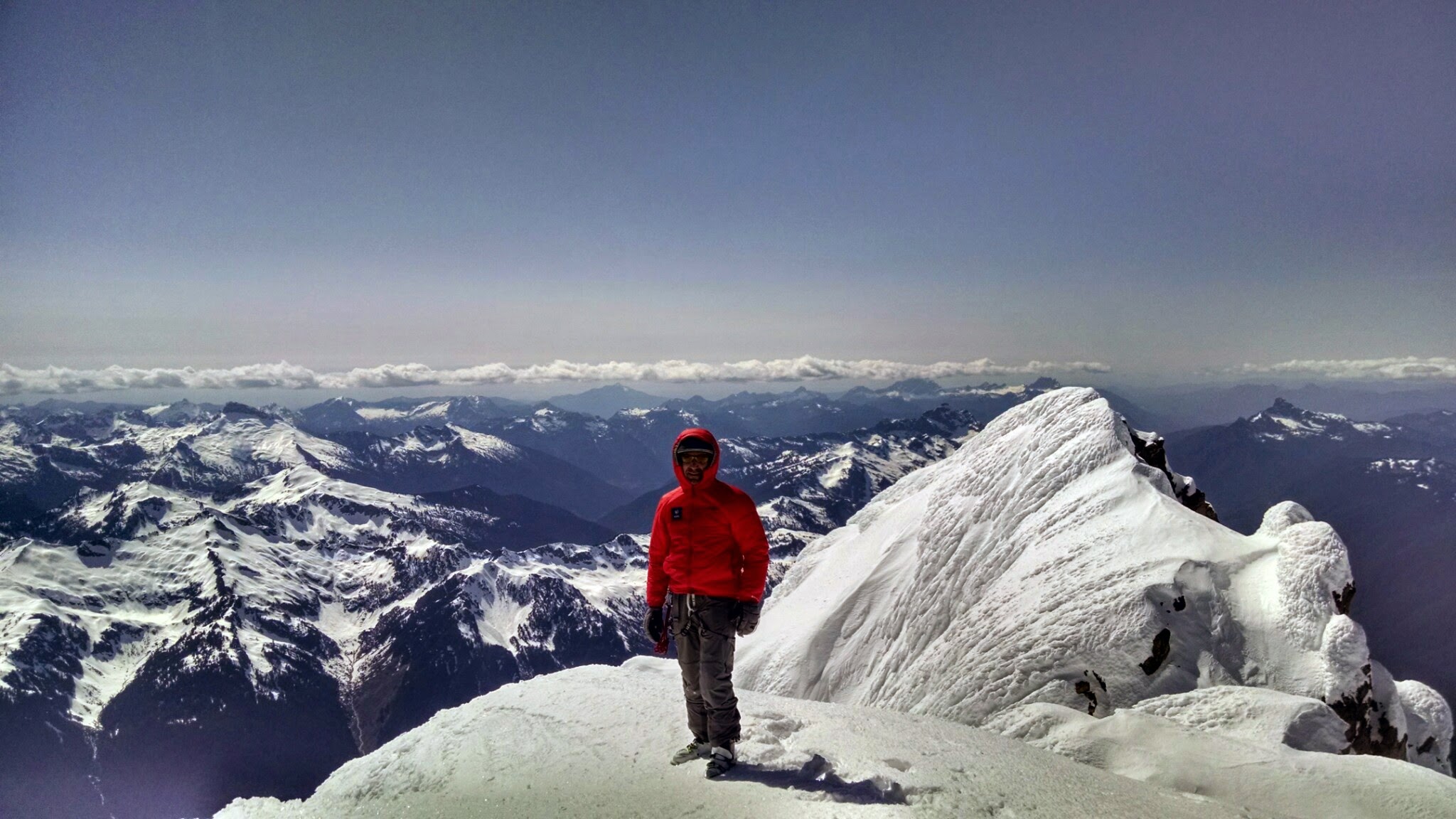
Fig 6j.1 - A sunny but cold day atop Glacier Peak, WA, USA. A synthetic down jacket with a hood helps keep you warm. As this person would find out just 10 minutes later, it also keeps you warm when you fall into a crevasse (not recommended). (Credit: West)
A given person's degree of comfort at any temperature is unique to that person. A comfortable skiing temperature range is about -8°C to +3°C. Most skiers have gear that will keep them warm in this range. Naturally, you layer more for the colder end of that range, and start to shed layers at the upper end. The amount of heat your body produces will also be different if you're skiing hard in technical moguls (warmer), or going for an easy cruise on a mellow groomer (colder).
Notably, in the backcountry your layering will be very different when you're skinning up (less layers) than when you're skiing down (more layers). Looking at the current and forecast temperatures for your day every time you go skiing is recommended; that way you will become experienced associating different temperatures with different layerings of clothing. If you're unsure, it's best to err on the side of caution and bring a wide range of layers. You can always ditch some of them in the car.
Cold temperatures
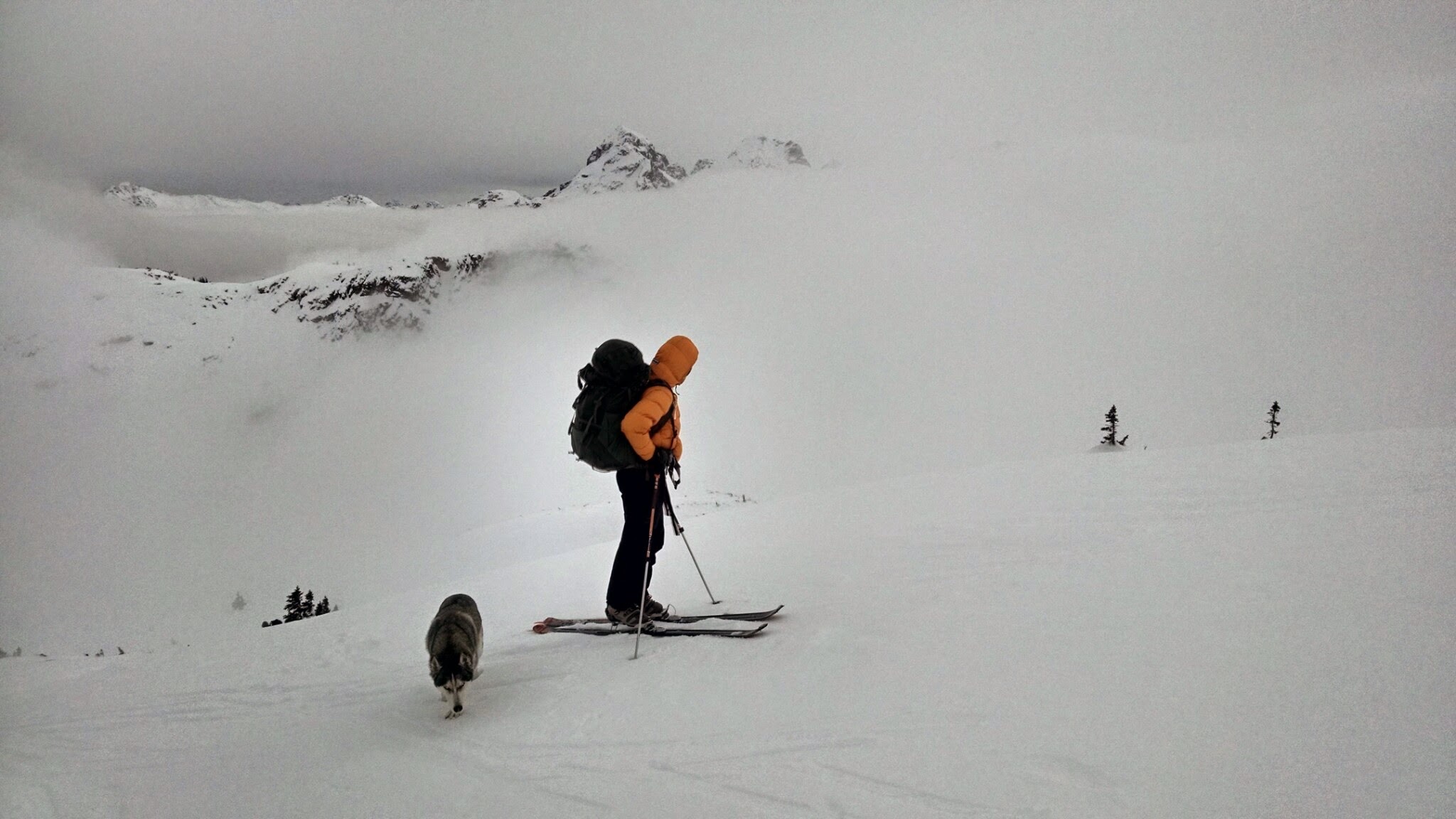
Fig. 6j.2 - Bundled up in a down jacket with a hood on a cold, cloudy day on Cayoosh Mountain, BC.
Cold temperature hazards primarily include frostbite and hypothermia. It's also important to consider the wind, as wind chill can make a given temperature feel much colder. Other secondary effects can occur. For example, in Learning Goals 7e and 7i you learned that cold temperatures can lead to the formation of a weak snow layer at or near the surface. When this weak layer gets buried by subsequent storms, it can lead to avalanches.
Keep in mind that the exact temperatures discussed in this section are rather subjective, but they provide some guidance.
Generally speaking, as the temperature gets colder and approaches freezing, you will want to wear some kind of thermal layer beneath your ski jacket and pants. If, when you check the temperatures for your day of skiing, you see a temperature of about -10°C or lower, this is a colder than typical day. This may just be the cold morning temperature - some warming typically occurs during the day so be sure to check the forecasted afternoon temperature as well.
At a temperature of about -10°C or below, you'll want to a) bring additional warm layers (like down, synthetic down, fleece, or wool); b) wear warmer gloves or mittens; c) cover up your face and neck with a neck-warmer or a balaclava; and d) consider putting chemical warmers in your boots and gloves. Monitoring your extremities for symptoms of frostbite is important, and frequent breaks in the lodge are a good idea, to warm up. If you're winter camping make sure you have a sleeping bag warm enough for the conditions.
When the temperature gets to -15°C or lower, it might be time to consider calling off your ski trip unless you're thoroughly prepared.
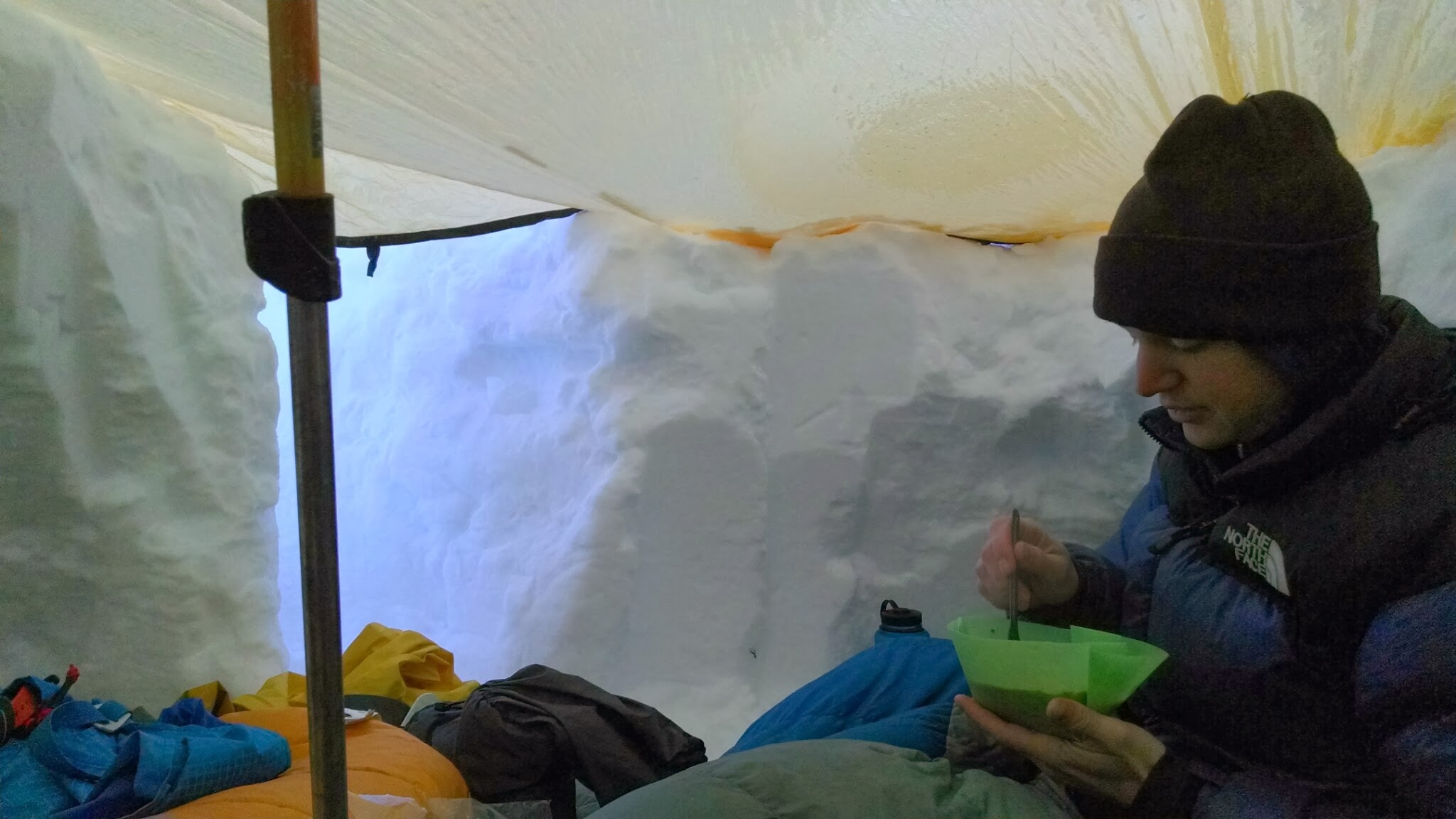
Fig. 6j.3 - A cold morning winter, camping in the Blackcomb, BC backcountry. A down jacket and a warm down sleeping bag with an insulated sleeping pad are necessities. This particular shelter is called a "trench" or "tarp trench". A pit, or trench, is dug in the snow, large enough to sleep in, and then a tarp is suspended over top. The snow walls and floor actually insulate the shelter quite well, keeping in the heat that your body is losing. Snow shelters are the warmest shelters for winter camping, other than a heated hut!
Warm temperatures
Warm temperatures for skiing are typically anything above 5°C. This is unusually warm for the time of year, sometimes referred to as unseasonably warm. You should be prepared to wear a minimal number of thin layers. Above about 5°C you may consider wearing just a long sleeve shirt and light jacket. At about 10°C or above, just a long sleeve or even short sleeve shirt may be appropriate. Instead of snowpants, you might just wear lighter, preferably non-cotton pants. (Cotton holds moisture and can freeze if the temperature decides to drop or you climb to an elevation where it's colder - this can be dangerous!) If sunny conditions are also expected you should be aware of strong solar insolation, and as you start to de-layer it's important to wear sunscreen, and to reapply through the day.
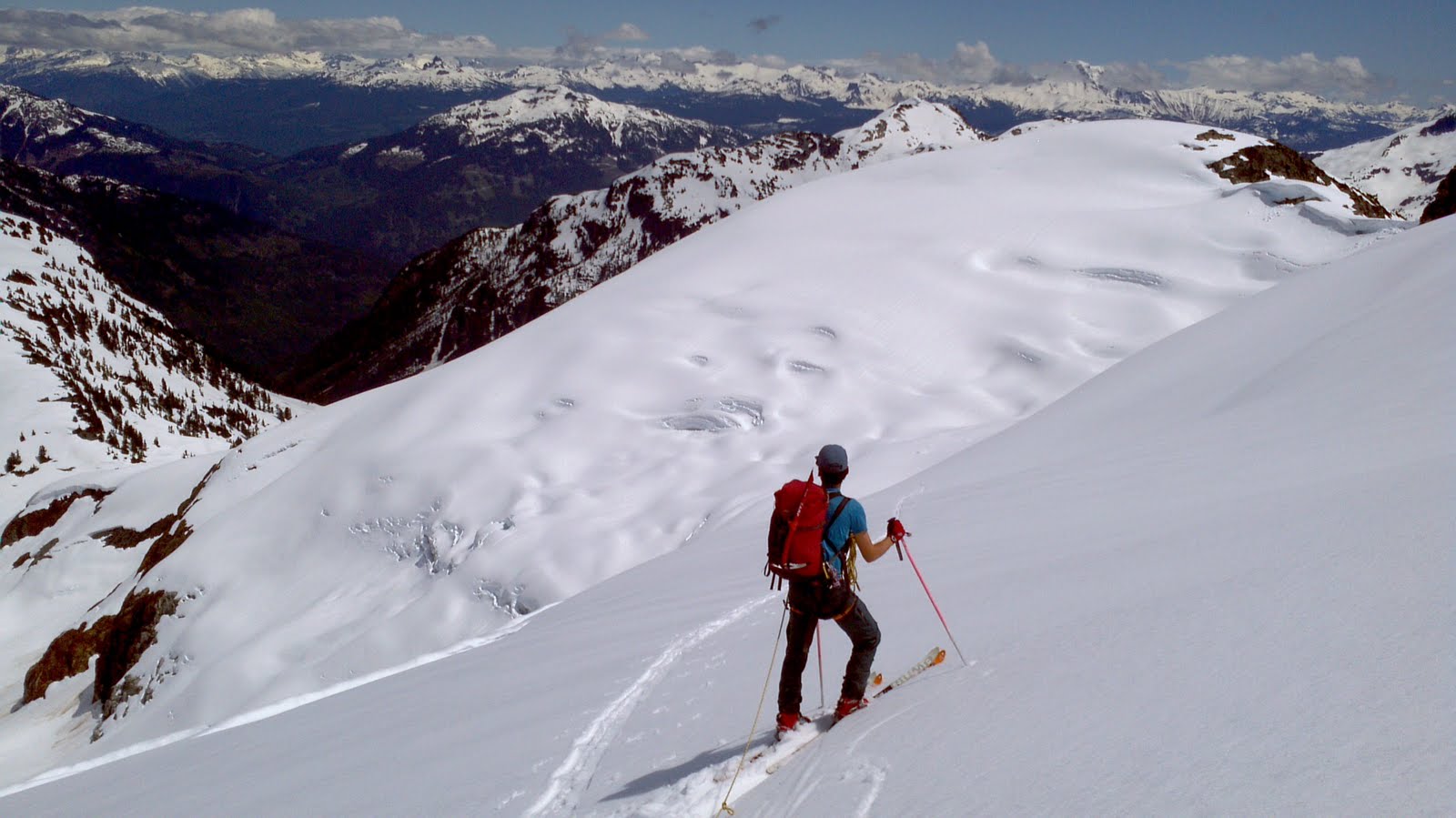
Fig 6j.4 - A late spring day in the backcountry on Mount Jimmy Jimmy, BC. Temperatures were warm enough for short sleeves, and sun screen was re-applied regularly.
If you're booting or skinning uphill at these temperatures, take care not to overexert yourself, and stay hydrated. Hyperthermia (not to be confused with hypothermia) or heat stroke can occur even when you're surrounded by snow.
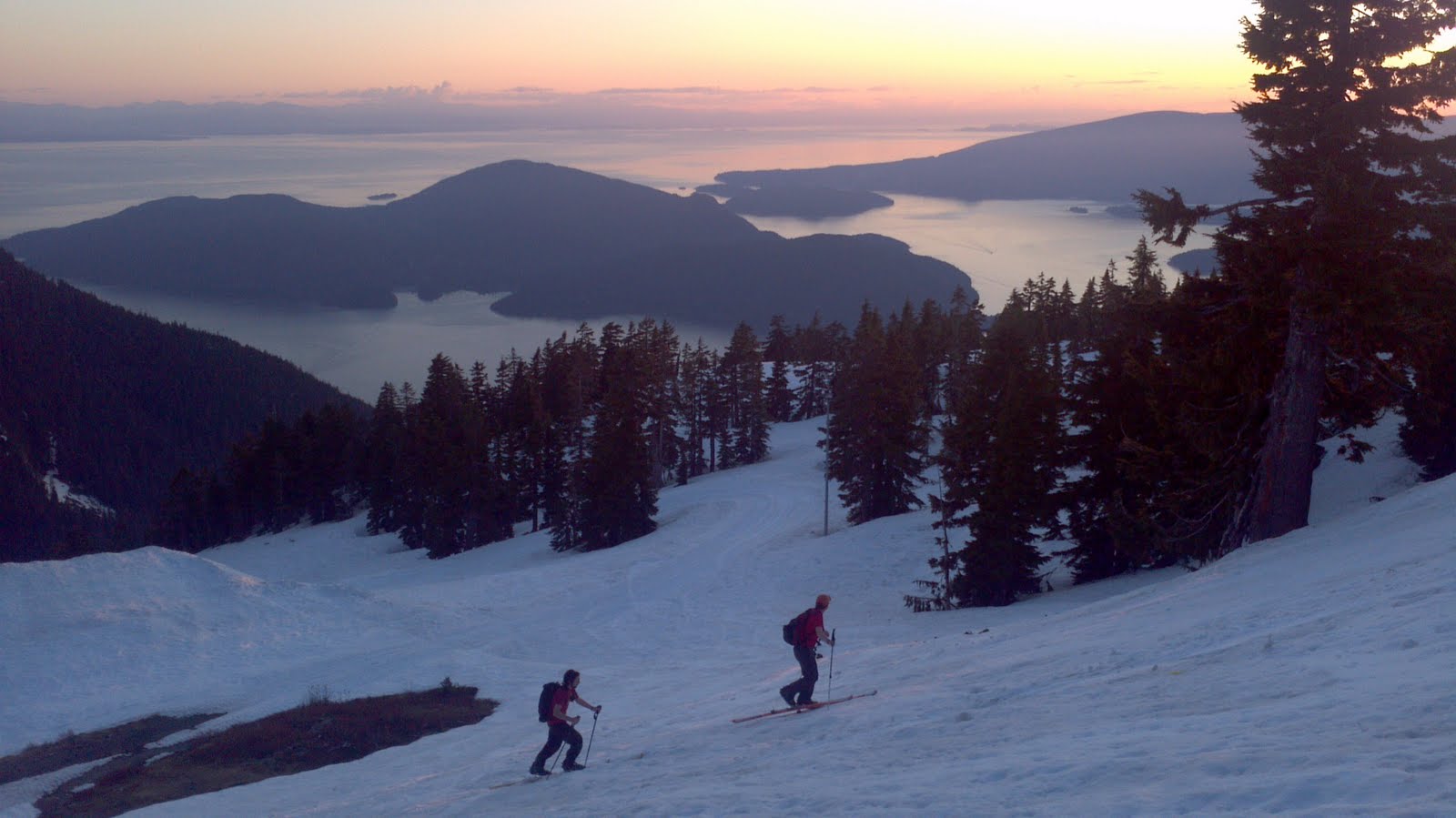
Fig 6j.5 - Skinning uphill on the summer solstice on Mount Strachan, BC. Nylon hiking pants and short sleeves are the right clothing for this outing.
Any time the temperature gets to 0°C or above, snowmelt starts to become a factor for ski conditions and avalanche danger. When there is a prolonged period of above freezing overnight temperatures for the first time in spring, wet slab avalanches become more likely. Further, when precipitation falls above 0°C it will probably fall as rain. This also has consequences for both ski and avalanche conditions.
Keywords: wind chill
Figure Credits
Howard: Rosie Howard
West: Greg West
Stull: Roland Stull